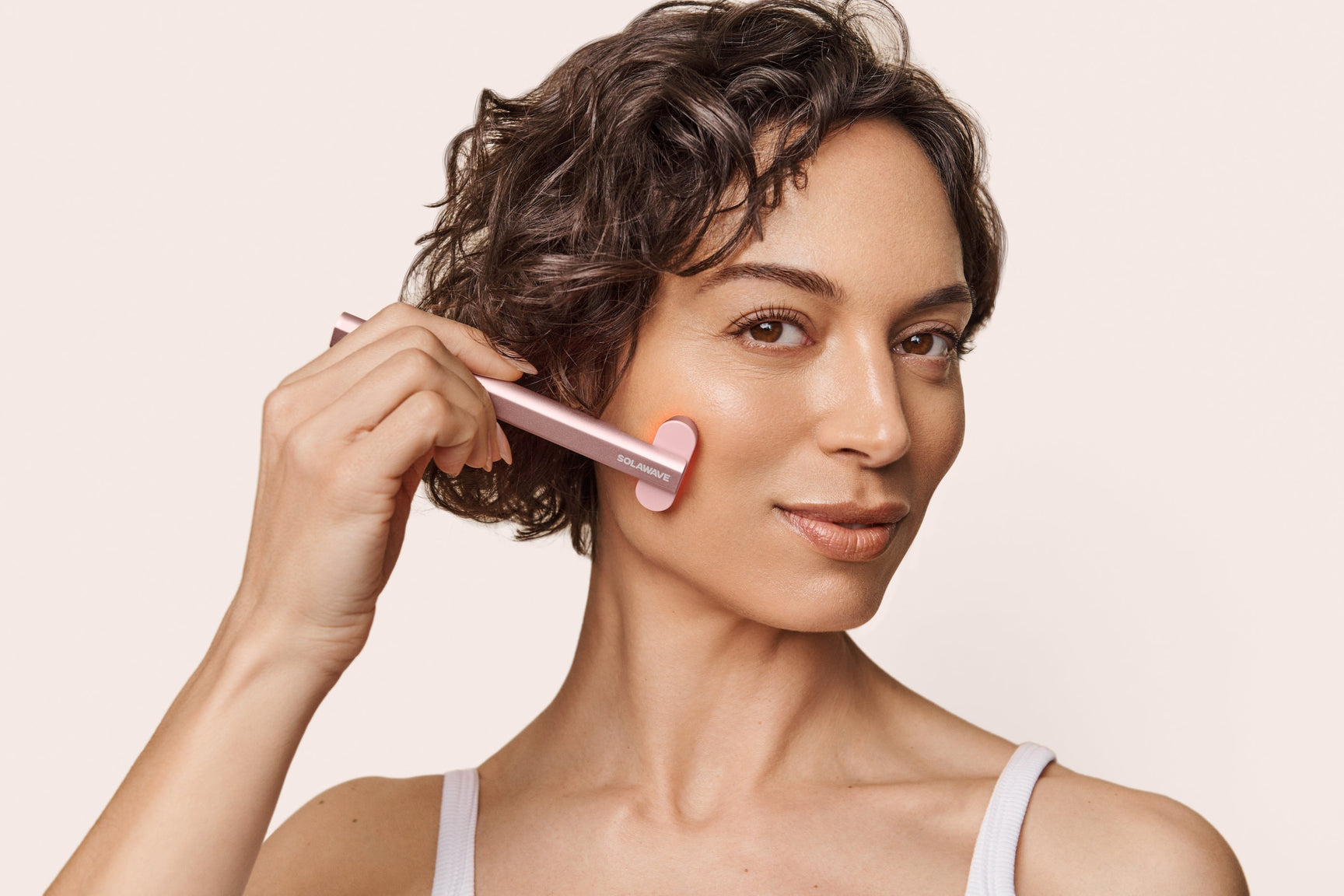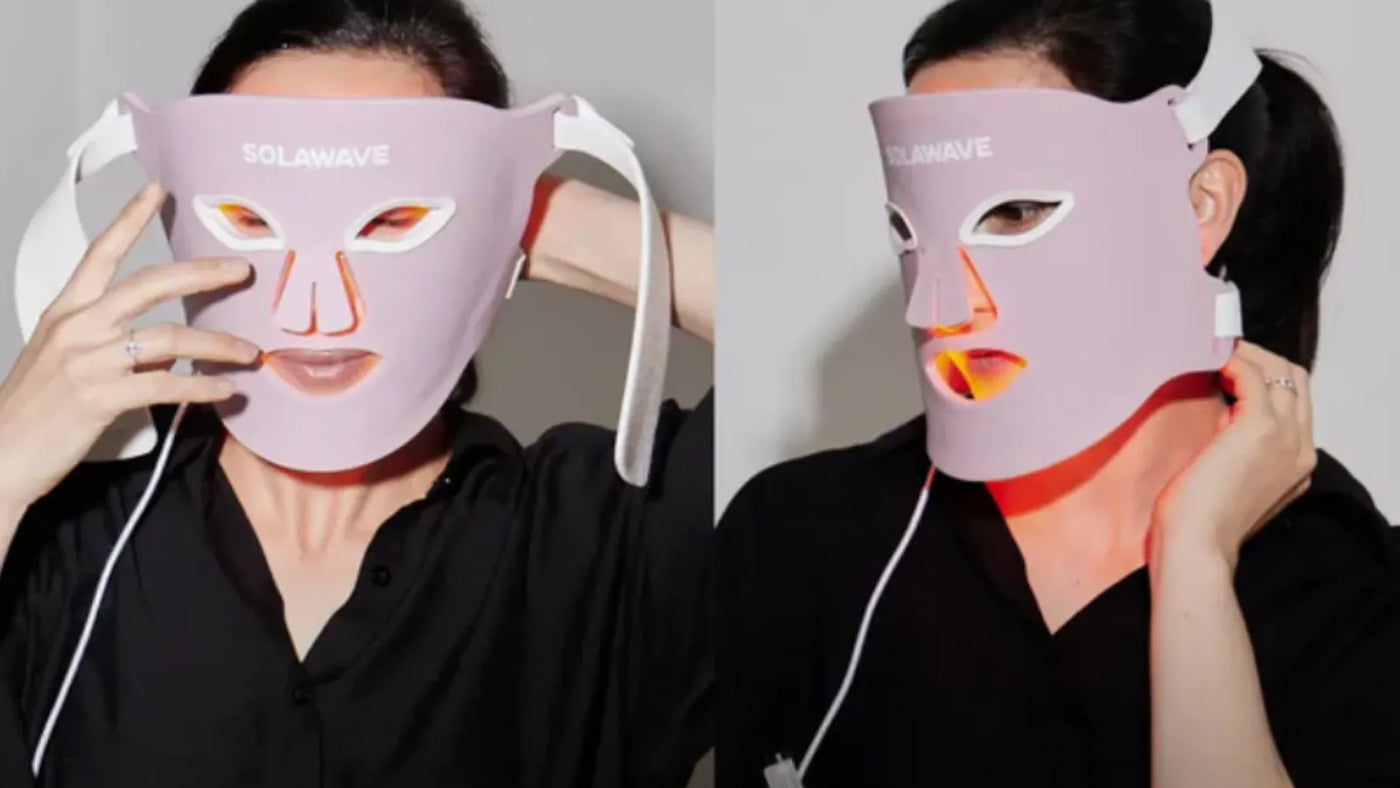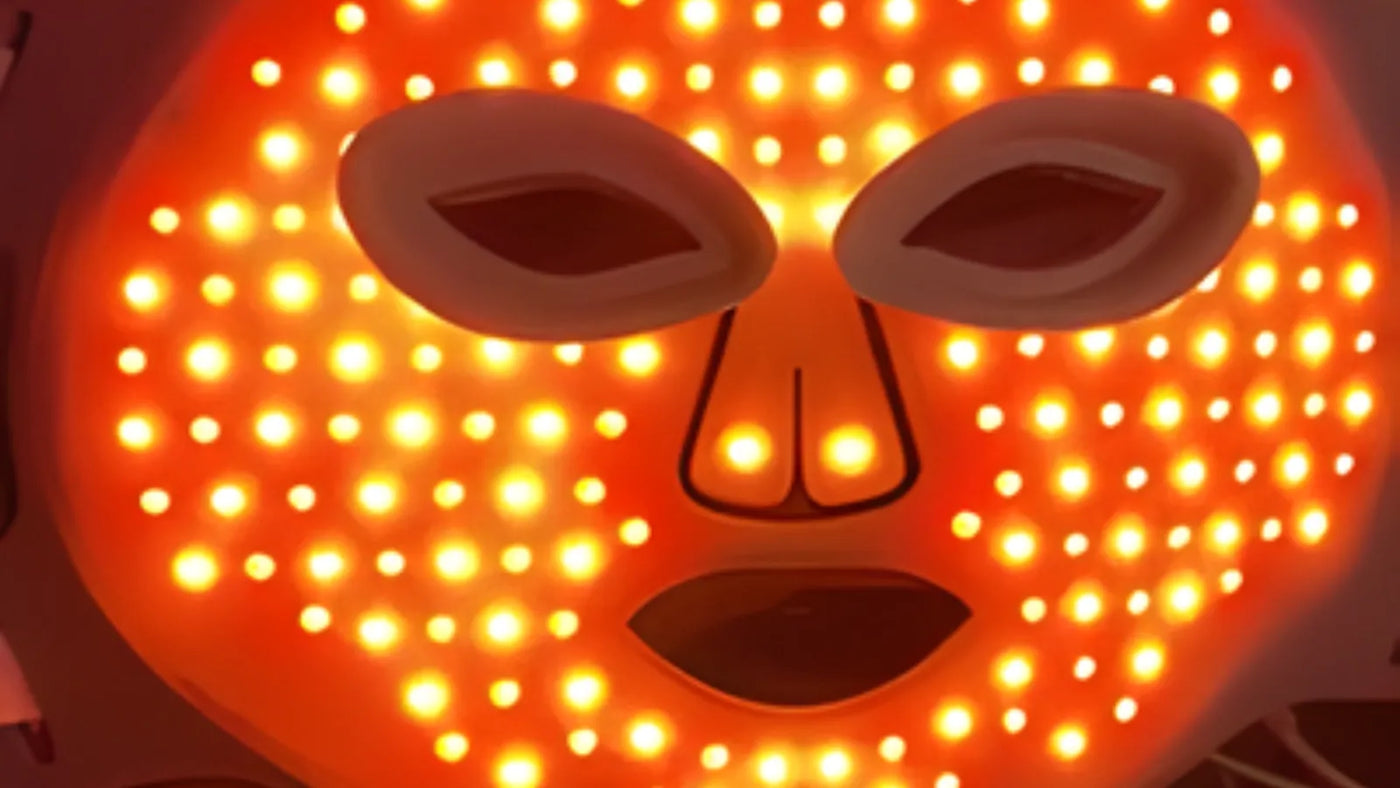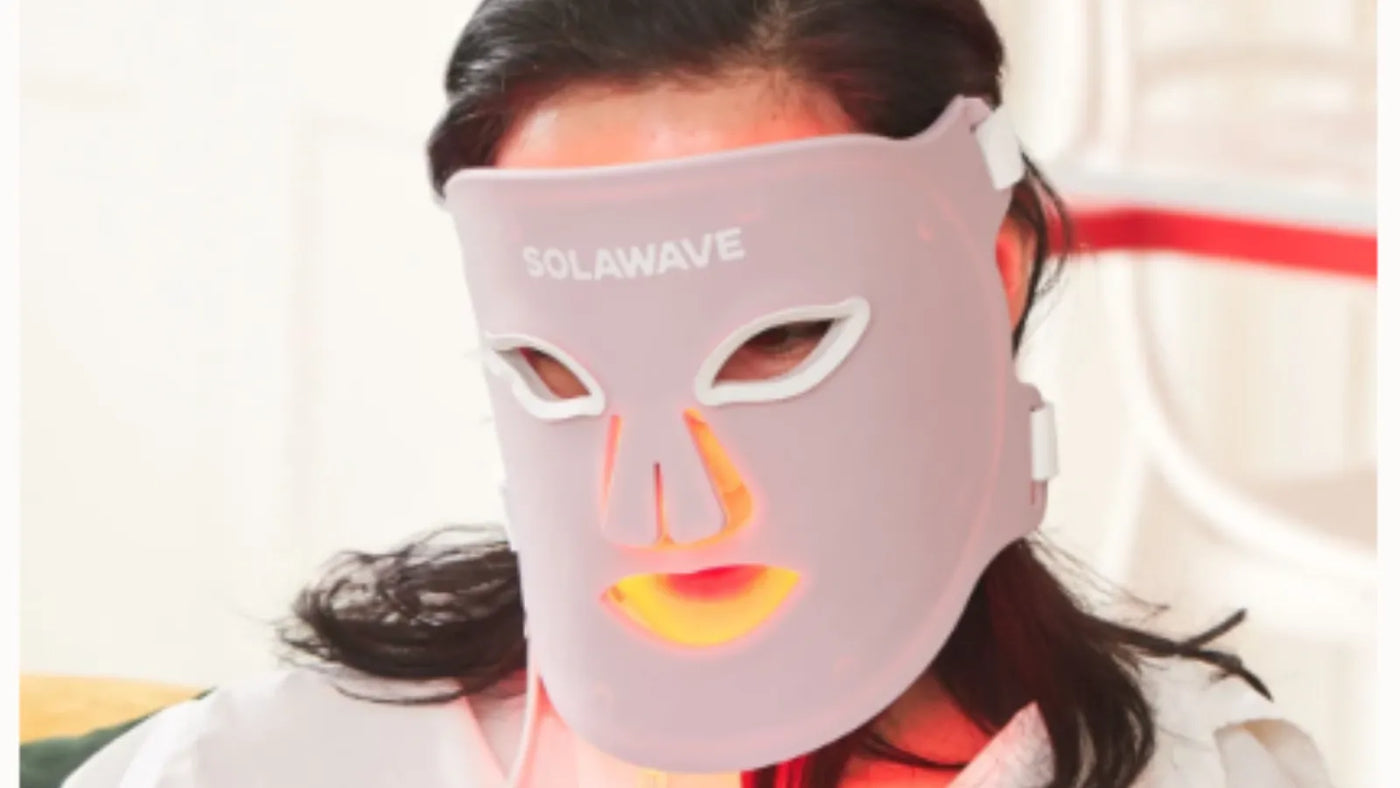

Far Infrared Light Therapy: What It Is, How It Works, and Where It Fits
What is far infrared?
Far infrared (FIR) is the longest-wavelength portion of the infrared spectrum. In most scientific classifications, infrared is divided into IR-A (near-infrared), IR-B (mid-infrared), and IR-C (far-infrared). FIR largely overlaps IR-C and covers roughly 3,000 nm to 1,000,000 nm (1 mm).
At these wavelengths, energy is primarily experienced as gentle heat rather than visible light. FIR is commonly used in saunas, heaters, and warming pads rather than in targeted skincare LEDs.
What is far infrared therapy?
Far infrared therapy applies FIR energy to the body to create mild, comfortable tissue warming. The goal is to support circulation, relaxation, and recovery with lower ambient temperatures than traditional steam saunas.
You’ll see it delivered by FIR sauna cabins, blankets, ceramic panels, mats, and some “far infrared lamp therapy” emitters designed to radiate heat rather than bright light. Reviews of FIR in medicine describe it as a non-invasive, well-tolerated heat therapy used across wellness and select clinical contexts.
How does far infrared therapy work?
At FIR wavelengths, the primary mechanism is thermal:
- Gentle heating of superficial tissues can trigger vasodilation (blood vessels widen), which supports microcirculation.
- Better local blood flow may assist comfort, recovery, and perceived stiffness relief in some users.
- Unlike red or near-infrared photobiomodulation, FIR’s effects are not about stimulating cellular photoacceptors, but about warmth-driven physiology.
What the evidence says (quick snapshot)
- Circulation & recovery: Medical reviews report FIR can improve comfort and hemodynamic measures in some populations, though study quality varies and more high-quality trials are needed.
- Lymphedema (oncology context): A recent randomized controlled trial reported that FIR therapy reduced gynecological cancer-related lymphedema and was considered oncologically safe within the study protocol. Clinical recommendations still depend on your care team.
Important: FIR is not a cure-all. Evidence ranges from promising to preliminary depending on the outcome. Treat FIR as complementary wellness support, and speak with your clinician if you have a medical condition.
Far infrared vs. red and near-infrared (what matters for skin)
For skincare goals like supporting collagen and visible rejuvenation, the best-studied wavelengths are visible red and near-infrared (NIR). These shorter wavelengths can reach chromophores in cells and are widely used in LED skincare devices and professional panels.
FIR, by contrast, is primarily for comforting warmth and relaxation. If your aim is skin appearance, focus on red/NIR devices and use FIR separately for general wellness.
Far infrared light therapy products (what to look for)
If you’re exploring far infrared light therapy products, check:
- True FIR emission: Look for ceramic or carbon FIR emitters and plain-English specs indicating far-infrared/IR-C output rather than just “infrared.” Heat lamps that glow visibly red often emit near-infrared, not FIR.
- Comfortable, even heat: FIR devices should feel gentle and uniform, not burning or prickly.
- Session control: Seek straightforward timers, temperature ranges, and safety shutoffs.
- Materials & build: Quality fabrics for blankets/pads, low EMF design claims validated by third-party testing, and clear safety guidelines.
- Use case match:
- Relaxation/recovery: FIR saunas, blankets, panels.
- Targeted skincare: Choose red/NIR LED devices instead of FIR.
Far infrared lamp therapy (how people use it)
Far infrared lamp therapy typically refers to ceramic emitters that radiate warmth without bright visible light. General practices:
- Distance: Start farther away and move closer only to a pleasant, gentle warmth.
- Time: Many users start around 10–20 minutes and adjust to tolerance.
- Frequency: Several sessions per week are typical for relaxation, similar to how people schedule sauna visits.
- Safety: Avoid direct heat on sensitized skin, open wounds, areas with impaired sensation, or when contraindicated by a clinician. Evidence supports comfort benefits, but formal medical advice is essential for specific conditions.
Far infrared light therapy devices vs. at-home red/NIR skincare
- FIR devices = warmth-based relaxation and general wellness.
- Red/NIR skincare devices = light-based photobiomodulation for visible skin benefits such as supporting collagen and improving the look of tone and texture. For skin goals, choose FDA-cleared red/NIR devices and follow manufacturer guidance.
Tip: If you enjoy sauna-like relaxation, keep FIR in your wellness routine. For complexion goals, add a red/NIR LED device. They’re complementary, not interchangeable.
FAQs
What is far infrared therapy?
Far infrared therapy applies long-wavelength infrared heat to the body using saunas, blankets, panels, or ceramic lamps to promote gentle warming, comfort, and circulation support.
How does far infrared therapy work?
FIR works mainly through thermal effects. Mild tissue warming can widen blood vessels and support microcirculation, which many people find relaxing. It is not the same mechanism as red/NIR photobiomodulation.
Is far infrared light therapy good for skin?
FIR is best for relaxation and warmth. For visible skin rejuvenation, evidence favors red and near-infrared wavelengths used in LED skincare devices. Many brands design devices specifically around those shorter wavelengths.
Are there clinical studies on far infrared therapy?
Yes. A randomized trial reported beneficial outcomes for cancer-related lymphedema with FIR therapy, and reviews discuss circulation and comfort benefits. Evidence quality varies by condition.
What are common far infrared light therapy devices?
FIR saunas/blankets, ceramic panels, mats, and ceramic “lamp” emitters that radiate heat without bright light. Check that products specify far-infrared output.
How does far infrared compare to red and near-infrared for skincare?
FIR = heat-based relaxation.
Red/NIR = light-based photobiomodulation often used for collagen support and visible complexion benefits in skincare devices.





















